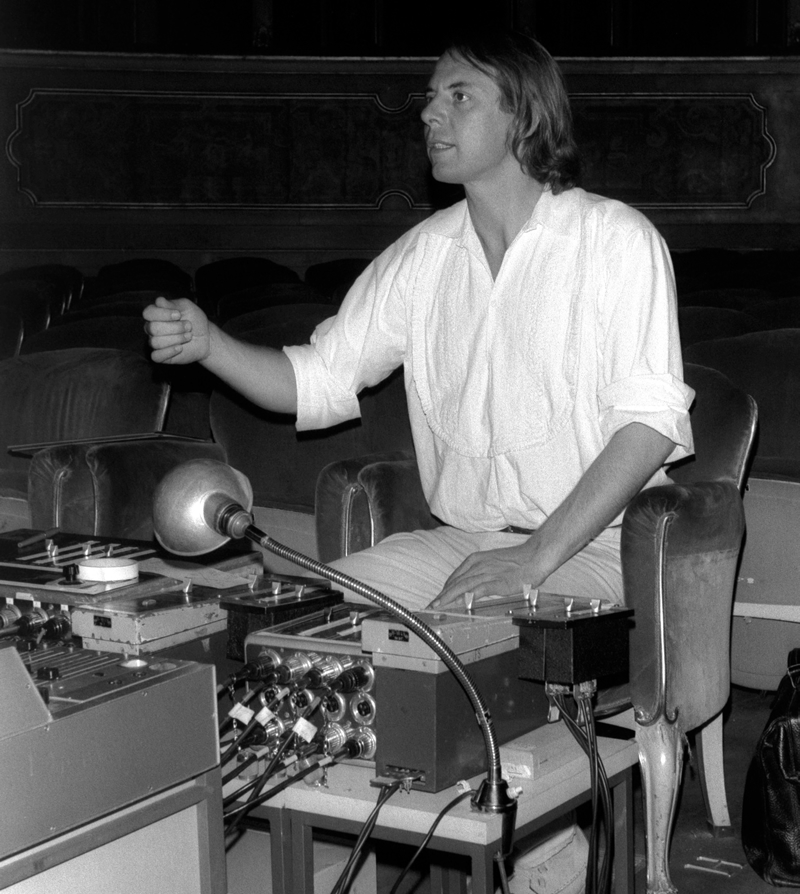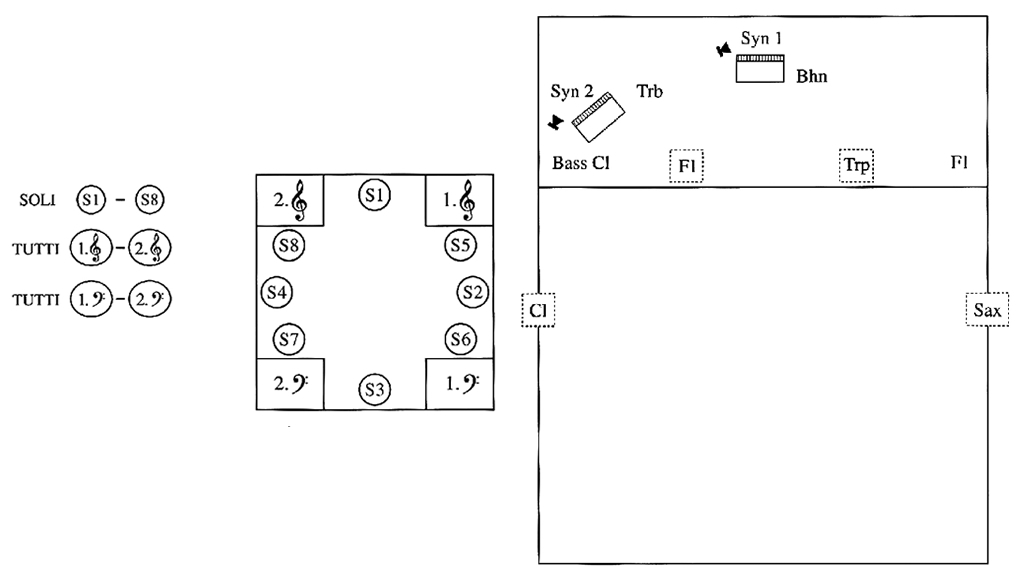
Instrumentation Works for Orchestra
Stockhausen Complete Edition on CD
Since 1991, a complete edition of all recordings in which Karlheinz Stockhausen has personally participated is being released on compact discs. Each CD in this series is identified by Stockhausen's signature followed by an encircled number. The numbers indicate the general historical order of the works.
Stockhausen realised the electronic music and participated in these recordings as conductor, performer, sound projectionist, and musical director. He personally mixed down the recordings, mastered them for CDs, wrote the texts and drew the covers.
- The compact discs may be obtained from the Stockhausen-Verlag: Kettenberg 15, 51515 Kuerten, Germany (www.stockhausenCDs.com).
Karlheinz Stockhausen
Instrumentation Works for Orchestra
EUROPE GREETING
EUROPE GREETING
for Winds and Synthesizers (ad lib.)
(Duration circa 12 ½ minutes.)
In August 1991, the sculptor Helmut Lutz from Breisach (Germany) wrote to me saying that I should compose a
'Europe Fanfare' for the Etoile Sonore Europe (Sounding Star Europe) which would take place in September 1992.
In February 1992, the mayor of Neuf-Brisach (France) commissioned the world premiere of a 'concerted Europe Hymn' for winds. The suggested instrumentation was : 8 solo trumpeters, 1 extra solo trumpeter, 240 brass players (4 x 26 trumpets, 4 x 8 horns, 4 x 8 tenor horns and baritones, 4 x 16 trombones, 2 x 4 tubas).
The composition, which has a duration of 12½ minutes, is dated July 21st 1992 and is entitled EUROPE GREETING.
On September 12th 1992, the work was performed in the fortress of Neuf-Brisach by participants of a regional brass convention (divided into eight large groups), who had been rehearsed on location by Markus Stockhausen.
The score is composed for 2 high and 2 low groups of winds (TUTTI), synthesizers ad lib., and 8 solo instruments (SOLI).
Depending on the size of the space and the ensemble, it is possible to perform the work with any number of instruments. The groups should be balanced; for example, 8 SOLI, 2 TUTTI  groups, 2 TUTTI
groups, 2 TUTTI  groups, or proportionately more or fewer.
groups, or proportionately more or fewer.
The smallest possible ensemble includes 4 solo instruments, 4 (2 + 2) instruments for the  TUTTI groups, 4 (2 + 2)
instruments for the
TUTTI groups, 4 (2 + 2)
instruments for the  TUTTI groups. In that case, the lst solo instrument plays the SOLI 1 and 8, the 2nd solo instrument plays the SOLI 2 and 5, the 3rd one plays SOLI 3 and 7, the 4th plays SOLI 4 and 6.
TUTTI groups. In that case, the lst solo instrument plays the SOLI 1 and 8, the 2nd solo instrument plays the SOLI 2 and 5, the 3rd one plays SOLI 3 and 7, the 4th plays SOLI 4 and 6.
In performances of this version, the soloists are amplified using transmitters, the tutti winds with individual microphones, and each of the two synthesizers has two leads to the mixing console in the auditorium. A sound projectionist at a mixing console in the middle of the hall balances the instruments, and with panorama potentiometers projects the instruments in a stereo panorama between 2 x 2 loudspeakers which are at the left and right above the stage, circa 4.5 m high.
If it is possible in an auditorium for the 8 soloists 1 to 8 to surround the audience, and to set up the 4 groups (2  groups and 2
groups and 2  groups) in the four corners of the hall, then the following set up is recommended:
groups) in the four corners of the hall, then the following set up is recommended:
Cl = Clarinet
Bass Cl = Bass Clarinet
Syn = Synthesizer
Trb = Trombone
Fl = Flute
Bhn = Basset-horn
Trp = Trumpet
Sax = Saxophone
 = 4 soloists; clarinet and saxophone on high podia (ca. 1 m).
= 4 soloists; clarinet and saxophone on high podia (ca. 1 m).
